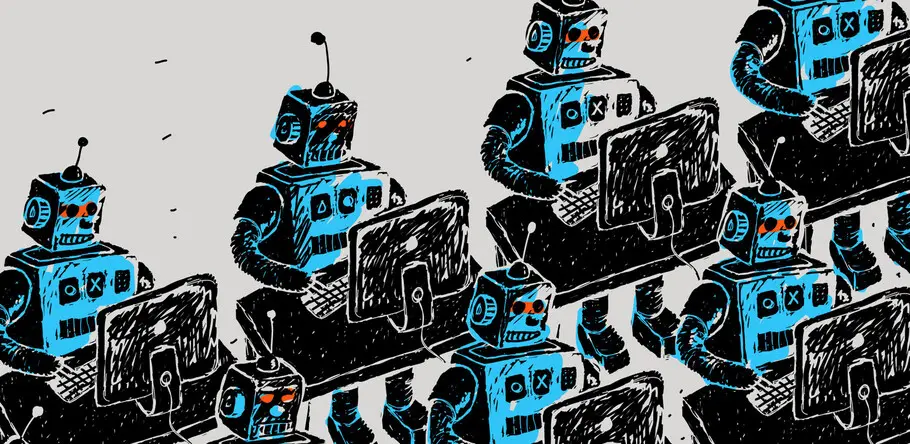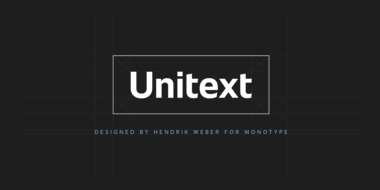How fonts help you rebrand for the future.

Modern rebranding initiatives are about more than just updating a brand’s look and feel. Companies today must adapt to rapid shifts in technology and customer expectations, which requires fundamental changes to the way they interact with their customers.
“Branding used to be content to maintain the separation between consumer and citizen,” says Monotype Creative Type Director, Tom Foley, “but now it’s more common to make decisions about the consumer through the lens of being a citizen.”
Branding is always evolving, of course. We’ve all watched as famous brands changed their logos, tried out (and sometimes failed with) new product offerings, and kept themselves fresh and relevant to their customers.
The difference is that, in the past, brands more or less controlled this evolution. Major inflection points, like the introduction of television, were followed by long periods of sameness that allowed brands to take measured, controlled risks when they rebranded.
They didn’t know how good they had it.
Where do we start?
Fast forward to 2022, and the leisurely pace of yesteryear has spun up into what feels like a week-to-week blitz of emerging trends, new apps, and expanding expectations.
“The most connected brands in the world excel through connected customer experience but also brand experience,” says Foley.
Tom Foley, Creative Type Director, Monotype.
Brands must adapt to major changes in their customer relationships and position themselves to respond to whatever comes next. It’s alarmingly easy to fall behind or feel overwhelmed by the pace of change, and some organizations may struggle to outline the scope or scale of a rebrand. Where do you begin? How do you connect all the dots?
Use type to kickstart your strategy.
Type is one of the most important aspects of a rebrand, whether you’re tied to a set of fonts or looking to start over from scratch. Fonts thread your visual identity through every customer touchpoint and may be your only brandable asset in use cases where color, imagery, and other elements can’t or won’t work.
For example, Steffi Marty, Mars’ Global Director of Brand Identity and Design, told the story of the iconic M&M’S rebrand which included a special focus on type. “As the M&M’S brand takes on a wonderful purpose, we want the identity to reflect and support the communication of all of that. The intent of the identity is to live the purpose, to be more digitally savvy, and to make the purpose omnipresent in all we do,” Marty explained. Consistent, branded type relieves the pressure on other brand assets and allows your design language to be flexible.
In the case of a rebrand, fonts are a good starting point for determining how you’ll adapt to your customers’ expectations. Does your brand need to hold up well in VR or a small screen environment? Is your audience global, or likely to be? If these situations don’t apply today, should you be prepared for that to change in the next few years?
Fonts are essential to addressing these needs, so establishing a comprehensive account of your customer touchpoints can help kickstart your visual identity decisions. What do you want the type to say about the brand? Should the brand express itself differently in different situations? Will you need a suite of font families to deal with different demands?
Answering these questions lays the foundation for everything that follows. You can build a font strategy that guarantees legibility and functionality in all environments while layering your visual identity on and around it.
How do we know we’re done?
You aren’t, really. Ever. Sorry!
Today’s rebrands don’t really end. Instead, think of rebranding as a revitalization of your relationship with your customers—a rethinking of the way you interact with your audience.
One primary goal of any rebrand should be to meet your customers where they are today and prepare for where they might be tomorrow. Your font strategy shouldn’t be seen as a fixed, rigid object, but rather a scalable tool that enables you to reshape your brand in real time.
Lilia Quinaud, Senior Designer, JKR.
“Stringent guidelines have been replaced with fluid style guides and philosophies that allow for flexibility, scalability, and more play on the design side,” says Monotype Creative Director James Fooks-Bale. No one knows what new trends or technologies will emerge in the next few years, but you can be sure your customers will embrace them. A looser approach to branding enables you to maintain a unified visual identity while leaving space for new ideas and unexpected changes in direction.
“At their best, designers forget their own ideas and develop empathy,” Jeremy Lindley, Global Design Director at Diageo told the Brand Talks London audience in December, 2022. Jeremy spoke about how design teams should go beyond the brief and fully embrace the experiences and expectations of all their customers.
Rebranding is an opportunity to shift into this mindset and build a structure that allows you improvise, experiment, and adapt as your customers demand.














